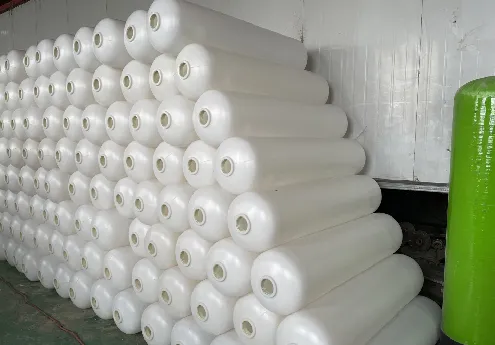loading...
- No. 9, Xingyuan South Street, Dongwaihuan Road, Zaoqiang County, Hengshui, Hebei, China
- admin@zjcomposites.com
- +86 15097380338
- Welcome to visit our website!
walkway frp
The Benefits of Using FRP in Walkway Design
In the architecture and construction industries, innovative materials play a crucial role in enhancing functionality, aesthetics, and safety. One such material that has gained significant attention is Fiber Reinforced Polymer (FRP). This composite material, known for its high strength-to-weight ratio and corrosion resistance, is increasingly being used in walkway designs. This article highlights the advantages of using FRP for walkways and why it has become a preferred choice for many engineers and architects.
Durability and Longevity
One of the primary benefits of FRP is its exceptional durability. Traditional materials such as wood or metal are prone to corrosion, rot, and deterioration over time, especially in harsh environmental conditions. FRP, on the other hand, is highly resistant to moisture, chemicals, and UV radiation. This makes it an ideal choice for outdoor walkways, which are exposed to the elements. With FRP, property owners can expect a longer lifespan for their walkways, reducing the need for frequent repairs and replacements.
Lightweight and Easy to Install
Another significant advantage of FRP is its lightweight nature. Compared to traditional materials, FRP is significantly lighter, making it easier to handle and install. This can greatly reduce labor costs and construction time, as fewer resources are needed for transportation and installation. Additionally, the lightweight property allows for more flexibility in design, enabling architects to create innovative walkway structures that would be difficult to achieve with heavier materials.
Design Versatility
walkway frp

FRP is highly customizable, allowing for a wide range of designs, colors, and textures. This versatility makes it an excellent material for walkways that require specific aesthetic appeals or functional features. Whether it's a modern urban pathway or a rustic garden walkway, FRP can be tailored to meet the design needs. Furthermore, FRP can be infused with additives to enhance its slip resistance, making walkways safer for users, even in wet conditions.
Sustainability
As sustainability becomes a key consideration in modern construction, FRP stands out as an environmentally friendly option. Many FRP products are made from recycled materials and can also be recycled at the end of their life cycle. Choosing FRP for walkways not only contributes to reducing the environmental footprint but also aligns with the growing demand for sustainable building practices.
Cost-Effectiveness
While the initial cost of FRP may be higher than traditional materials, its long-term benefits often result in overall cost savings. The durability and low maintenance requirements mean that building owners can save money over time on repairs and replacements. Additionally, the easy installation process reduces labor costs, making FRP a financially smart choice for walkway construction.
Conclusion
In conclusion, the use of Fiber Reinforced Polymer (FRP) in walkway design offers a multitude of benefits, including durability, lightweight properties, design versatility, sustainability, and cost-effectiveness. As architects and engineers continue to seek innovative solutions for outdoor walkways, FRP stands out as a compelling option that meets both functional and aesthetic needs. By choosing FRP, property owners can invest in walkways that are not only practical but also enhance the overall appeal of their spaces. As the construction industry evolves, FRP is likely to become a standard material in walkway design, paving the way for safer and more sustainable outdoor environments.
-
The Rise of FRP Profiles: Strong, Lightweight, and Built to LastNewsJul.14,2025
-
SMC Panel Tanks: A Modern Water Storage Solution for All EnvironmentsNewsJul.14,2025
-
GRP Grating: A Modern Solution for Safe and Durable Access SystemsNewsJul.14,2025
-
Galvanized Steel Water Tanks: Durable, Reliable, and Ready for UseNewsJul.14,2025
-
FRP Mini Mesh Grating: The Safer, Smarter Flooring SolutionNewsJul.14,2025
-
Exploring FRP Vessels: Durable Solutions for Modern Fluid HandlingNewsJul.14,2025
-
GRP Structures: The Future of Lightweight, High-Performance EngineeringNewsJun.20,2025
